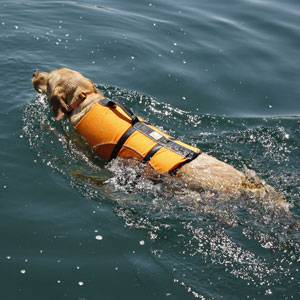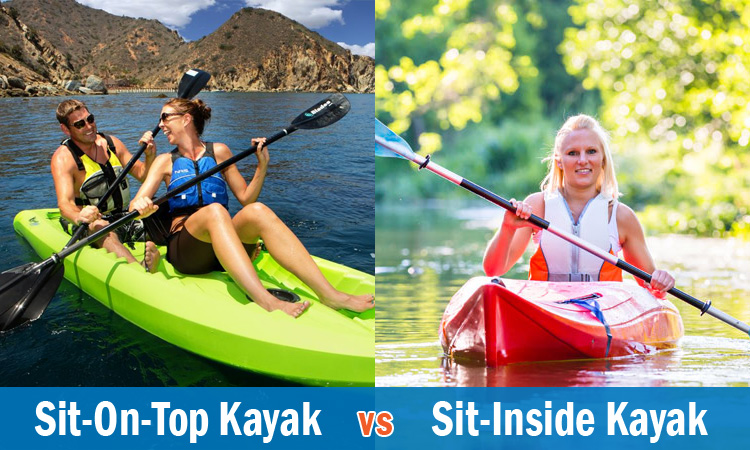
Choosing between a sit-on-top vs sit-in kayak is one of the first decisions you’ll make when you’re shopping for a kayak. And the truth is, the decision is ultimately a personal one. However, there are some distinct differences that should help you decide which one is right for you.
Before we dive into the differences, let’s quickly go over how they’re the same. Both sit-on-top and sit-inside kayaks are available in hard-shell or inflatable versions. Both types have a top that’s called a deck and a bottom that’s called the hull. The top deck usually has deck lines or bungees with grab loops at the stern.
There will be some form of foot support; either footwells or foot pedals that slide on a track to accommodate the length of the paddler’s legs. Foot pedals tend to be more comfortable, especially on longer trips. A backrest is also essential for comfort and is available in both types of kayaks. Of course, a life jacket is required for safety, no matter which type of kayak you choose.
Ok, now that you know how they’re the same, let’s dive into how sit-on-top and sit-in kayaks are different and explore the pros and cons of each.
See Also: 11 Benefits of Kayaking
Table of Contents
Sit-On-Top Kayaks
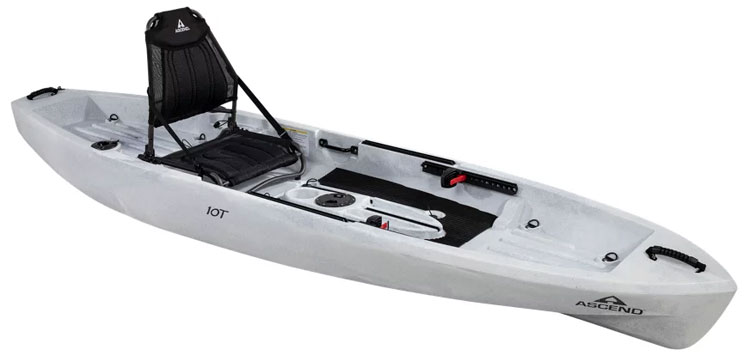
Sit-on-top (or SOT) kayaks have become quite popular recently. This style of kayak allows the paddler to sit on top of the deck. Some models have storage hatches that open for your personal belongings, but there is no inside area for the kayaker to sit in. Everything, including the seat back and footwells, is attached to the open deck.
As you can imagine, there is no way to stay dry on a SOT kayak. And, since there’s no cockpit, the water splashes up onto the kayaker. And that’s what makes an open-top kayak so popular with warm weather and tropical kayakers!
It’s much easier to stay cool as you paddle, and you can slide into the water for a quick cool off and get back on board relatively easily.
Pros
- Great for tandem use: Sit on top kayaks are great for multiple paddlers and can often support hundreds of pounds.
- Easy to customize: SOT kayaks can be customized with fishing rod holders, rudders, GPS, and even motors.
- Freedom of movement: SOT kayaks allow for an excellent range of motion, so they’re great for fishing.
- Easy to board: Since there’s no cockpit, they’re easy to hop on to and slip off of, even when you’re out on the water.
- Rudder options: Many models allow foot driven pedal or hand-operated rudders to give you more control.
Cons
- Not the best choice for rough water: Sit-on-top kayaks offer no protection from waves and rough water, and they’re more likely to tip.
- Limited storage: Most have a small dry storage hatch or two, but they’re usually a fraction of the size offered by a sit-in kayak. A good dry bag is essential.
- Heavier: Sit-on-top kayaks tend to be heavier than sit-in versions.
Sit-Inside Kayaks
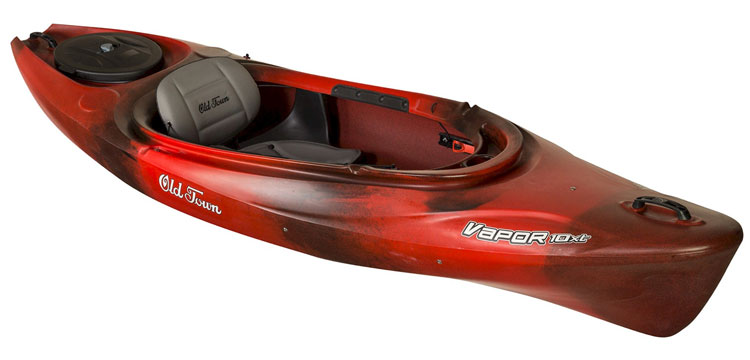
Sit-inside (or SIS) kayaks are the more traditional type of kayak with an open cockpit for the paddler to sit inside. The paddler’s body is inside the hull of the enclosed kayak, while his legs extend forward under the deck.
Some models also allow you to brace your knees on the inside walls for more efficient paddling.
Many SIS kayaks accommodate a skirt that covers the opening of the cockpit to keep the paddler dry from the waist down. The skirt goes around the paddler’s waist and stretches around the cockpit prim. If you kayak in chilly water or colder climates, a skirt is a huge advantage.
Pros
- Great for longer trips: SIS kayaks travel swiftly so they’re a great choice for longer excursions.
- Excellent maneuverability: Sit-in kayaks are nimble and easy to maneuver, even in busy harbors.
- Extra storage space: Most sit-in kayaks have plenty of dry storage built right in.
- Stable: Once you’re seated in an SIS, you’ll feel inherently balanced and stable. You would have to really work at it to tip it over.
Cons
- Limited freedom of movement: SIS kayaks can feel confining, and they’re not a great choice for fishing because they restrict movement required for casting and reeling
- Harder to launch: If you don’t have a dock, you’ll need to wade out pretty far… and you’re more likely to end up in the water.
Read Also: 4 Best Kayak Sail Kits for Beginners
Additional Things to Consider
When you’re deciding between a sit-on-top vs sit-in kayak, there are a few other things you will want to consider.
See Also: Canoe vs Kayak Differences
Kayak Length
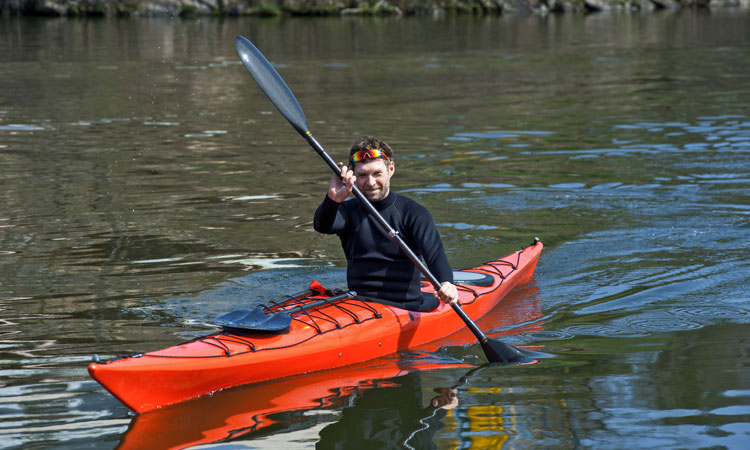
In general, the longer and narrower your kayak is, the faster it will travel in the water. A wider kayak is more stable, but it will also be slower.
Sit-on-top kayaks tend to be shorter and wider, which makes them more stable than many sit-in kayaks.
Sea Kayaks vs Recreational Kayaks
Sit-inside kayaks come in a wide variety of shapes and sizes, depending on your purpose.
Recreational types are wider and shorter, and they have larger cockpits. Sea (or touring) kayaks are longer and narrower to travel faster over longer distances. Their cockpits are smaller.
Hard Shell Kayaks vs Inflatable Kayaks
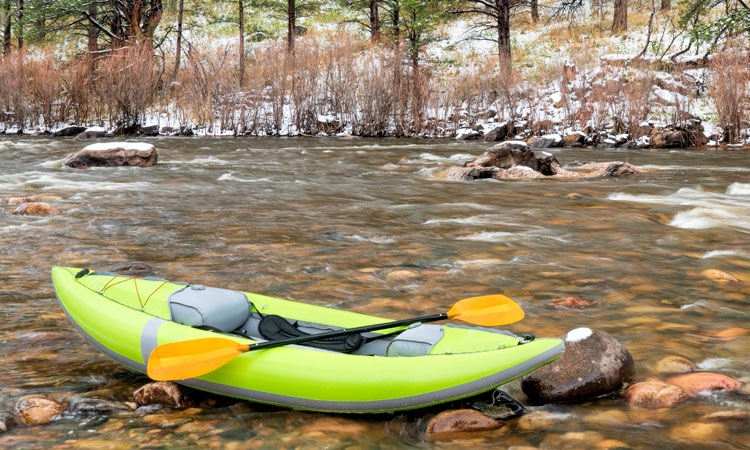
A hard-shell kayak is made from durable plastic that will last for many years without requiring much maintenance. They can be heavy and harder to store and transport.
On the other hand, an inflatable kayak is made from coated, extremely durable fabric. They can be deflated and folded up or rolled up for storage and transport. They aren’t as fast as hard-shell kayaks, but they’re very versatile and user friendly.
Related: 9 Myths About Inflatable Kayaks
Which is Better?
With so many things to consider, deciding which type is better may seem overwhelming, but it doesn’t have to be. There really is no wrong decision here.
Start by thinking about how you’ll be using the kayak and you’ll find that the decision is actually pretty easy to make.
The Case for Sit-On-Top Kayaks
If you’ll be paddling mostly in calm waters and warm climates, a sit-on-top kayak is a great choice, especially if you’re a novice paddler.
SOT kayaks are also the best choice for fishermen or those who want to tandem kayak. Just keep in mind that you will probably travel a bit slower and you may not have as much storage space.
The Case for Sit-In Kayaks
On the other hand, if you’ll be paddling in rough water or colder climates, the extra protection of a sit-inside kayak will make your trip much more enjoyable. They also tend to be more stable which is a huge plus on longer trips.
Sit-in kayaks can usually handle enough gear for a short, multi-day trip, and depending on which model you choose, they’re often faster in the water.
No matter which one you choose, both sit-in and sit-on-top kayaks provide a fantastic way to explore out of the way places and have fun in the great outdoors. Choose the one that best suits your paddling style and the conditions you’ll most likely be paddling in.
If you’re still unsure, arrange a test paddle at your local kayak store to help you narrow down your decision even further.


